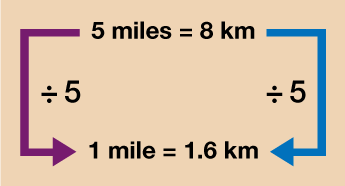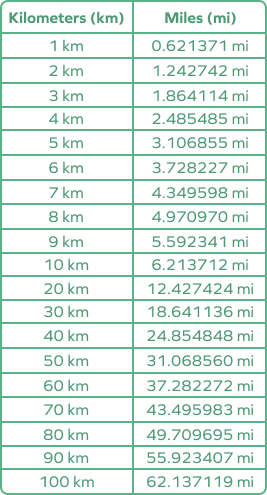Roads & PavementRoads & Pavement
Barefoot
Minimal
Low
Medium
High
Maximal
All around running shoes offer comfort and cushioning for daily runs, jogs, walks, and long mileage. They offer enough versatility for both faster and slower runs and are a great option for those who want one running shoe to do it all.
Fast run or uptempo running shoes are lightweight and responsive. They offer streamlined designs that have minimal uppers and offer a high level of energy return. These shoes are a great option for faster runs in the week or those looking for a livelier experience.
Max Cushion shoes offer premium cushioning with ample ground protection and a stable ride. These types of shoes provide abundant impact protection that softens landings while running at any pace or distance. These types of shoes are best for slower recovery runs and easy days where comfort takes priority.
Racing shoes are designed with optimal performance in mind. These types of shoes have snug-fitting uppers, energetic midsole foams, and features implemented for maximum efficiency. These types of shoes are best for runners looking to gain the ultimate advantage in races but may sacrifice some durability and comfort.
Gym Workout shoes offer a stable and versatile ride. They have a firmer underfoot feeling that provides stability for lateral movements with comfortable uppers. These types of shoes are best for trips to the gyms, cross training, casual wear, and light running. Everyday maths 2 Session 2 2.2 OpenLearn Open University
Road running shoes feature smooth outsoles that are designed for running on paved surfaces such as roads, sidewalks, and bike paths.
Designed to handle most trail runs, these shoes prioritize comfort and a smooth ride. These shoes are great for anything from smooth singletrack, park trails, and fireroads making them ideal for those who run from their doorstep on streets before hitting the trail.
These shoes are best used for hard, rugged trails such as shale, granite or sandstone where grip on smooth surfaces and underfoot protection are important.
Designed for use in muddy, soggy conditions, these shoes feature very aggressive outsoles that dig deep into soft ground for exceptional traction.
These shoes feature technical outsoles designed to grip snowy and icy trails making them ideal for winter trail running.
Cushioning level, or stack height, refers to how much shoe is between your foot and the ground. For this category, we reference the amount of cushioning below the forefoot as the heel height will be equal to or greater than the forefoot height.
Robert Maillet After my 8.5 km 5.2 miles run Strava Facebook
0-13mm. The Shoe generally does not have a midsole and feels like there is no cushioning. This shoe is all about feeling the ground underfoot.
14-18mm. The shoe has a thin midsole that allows for a natural running experience. Racing shoes and minimalist shoes are common here. These shoes offer a feeling of being connected to the road or trail.
19-23mm. The shoe has a slightly cushioned feel and may feature added cushioning technologies. Performance training shoes and some trail shoes are common here. These offer protection during footstrike but prioritize a lightweight, grounded experience.
24-28mm. These shoes have a stack height that fall near the middle of the spectrum.The shoes in this category are verstaile and great for all types of runs and distances.
29-34mm. The shoe has a thick midsole and ample cushioning. These shoes are highly protective and absorb more impact than the body.
35mm plus. The shoe has an extremely thick midsole and extra cushioning. The focus is on protection and soft foam underfoot with hardly any ground feel.
Neutral shoes support the foot through a normal range of arch collapse and generally do not have a built-in technology to correct movement.
Stability shoes are a great option for those who overpronate or need added support. These shoes help to limit the inward rolling motion of the ankle while running or walking and assist in guiding the foot straight through the gait cycle. Kilometers to Miles Conversion km to mi Formula Steps
Product Details:
Solved can you please write the program in C along with Chegg outlet, Please solve this program for me week 4 python outlet, Linear Map Scale with Kilometers and Miles Ratio. Distance outlet, Converting Miles to Kilometres YouTube outlet, Google Lat Long Go by miles or kilometers outlet, Kilometers to Miles Conversion km to mi Formula Steps outlet, How many miles in 8.5 kilometers ConvertOctopus outlet, Solved 8. A marathon is 26.2 miles What is the distance in outlet, Solved It is given that 5 miles 8km. The figure shows a outlet, How Long Is a 5K in Miles outlet, Kilometers to Miles Conversion Approximation of Fibonacci Series outlet, SOLVED Since the conversion from miles to kilometers is 1.609 km outlet, 8 km is equal to 5 miles. The fraction useful in converting kilometres outlet, Answered 2 It is given that 5 miles 8 km. The bartleby outlet, Friday Fartlek Run Runner s World 5km Threshold Miles Coach outlet, 7 Minute Mile Pace Chart 7 00 7 59 Pace per Mile outlet, Converting Between Miles and Kilometers A outlet, Choosing appropriate units and converting between units KS3 outlet, Solved As an estimation we are told 5 miles is 8 km. Convert 25 outlet, Running Pace Conversion Chart The quick way to see how fast you outlet, Whiteboardmaths 2007 All rights reserved ppt download outlet, SOLVED Since the conversion from miles to kilometers is 1.609 km outlet, Miles to Km Converter Miles To Kilometers Inch Calculator outlet, How Long Does It Take to Walk Distances From a Mile to a Marathon outlet, Kilometers to Miles Conversion km to mi Formula Steps outlet, Choosing appropriate units and converting between units KS3 outlet, Convert miles to kilometres Measuring in Year 6 age 10 11 by outlet, Miles to Km Converter Miles To Kilometers Inch Calculator outlet, Converting Between Miles and Kilometres Year 6 CGP Plus outlet, Printable Kilometers to Miles Conversion Chart outlet, How Long Does It Take to Walk a Mile 5 Miles or More outlet, Convert Miles to Km Example Problem outlet, Mileometer outlet, How to convert from kilometers per hour to miles per hour in my outlet, 5 Kilometers in Miles Tips to Run a 5K PR rundreamachieve outlet, SOLVED As an estimation we are told 5 miles is 8 km. Convert 56 outlet, SOLVED As an estimation we are told 5 miles is 8 km. Convert 100 outlet, How many miles is 5k Quora outlet, Converting Miles to Kilometres outlet, Objective I can convert between miles and kilometres outlet, Running pace chart Pace converter min mile to min km outlet, Kilometers to Miles Conversion km to mi Formula Steps outlet, Robert Maillet After my 8.5 km 5.2 miles run Strava Facebook outlet, Everyday maths 2 Session 2 2.2 OpenLearn Open University outlet, Converting between Miles and Kilometers outlet, What Is 8.5 Kilometres in Miles Display Poster outlet, How To Convert Between Miles And Kilometres Using 5 miles 8km non calculator outlet, km to miles Kilometer To Miles Conversion Civil Site outlet, 8.5 Miles To Kilometers Converter 8.5 mi To km Converter outlet, 8.5 Km to Mi 8.5 Kilometers to Miles Distance Conversion outlet, Product Info:
8 5 km in miles outlet.
- Increased inherent stability
- Smooth transitions
- All day comfort
Model Number: SKU#6521705




